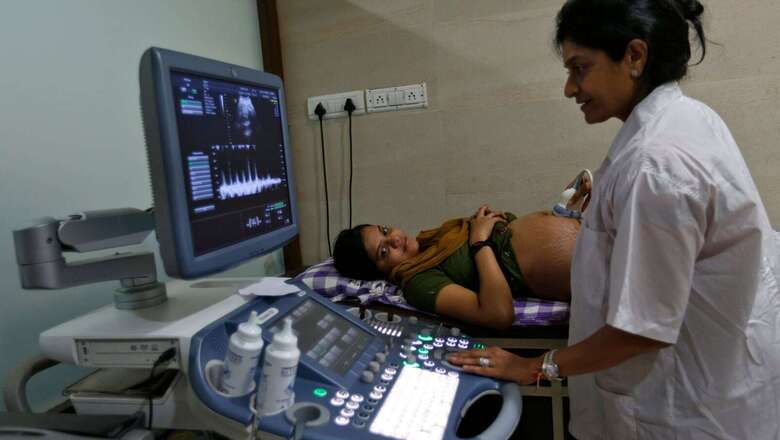
views
We are now in the third decade of the 21st century, seventy-five years after India gained Independence. In these years, the country has progressed in more sectors than one. The improvements across several health indicators are tremendous. These stories have been a result of conscious efforts towards achieving the goal of “Health for all”. As India heads towards becoming a superpower, it is important to look at the advancements we have made in the health sector.
Life Expectancy
One of the most significant and frequently used markers of human advancement is life expectancy. It aids in determining the population’s general health. In 1950, three years after the country gained Independence, the life expectancy stood at 35.21 years. The current life expectancy for India in 2022 is 70.19 years which is a 0.33 percent increase from 2021. The efforts in the last seventy-five years have definitely been noteworthy. Maternal and new-born mortality have both significantly improved as a result of advancements in healthcare infrastructure and accessibility. All combined efforts have led to improvement of life longevity in the country.
Infant Mortality
Child mortality has always been one of the grave concerns in our country. Around the time of Independence, nearly 1 out of every 8 babies used to pass away before turning one-year-old. More than seven decades after Independence, the numbers have drastically improved with mortality now reduced to 30 per 1,000 live births. This is in part due to the government’s effort to focus on maternal and child health. The government has focused a lot on the health of the mother and child with programmes such as Anganwadi Services Scheme (formerly known as Integrated Child Development Scheme) and POSHAN Abhiyan.
Tuberculosis
Although, India continues to bear the maximum burden of TB patients in the world, it still has managed to come a long way in tackling it. In the 1990s, the Indian government started several schemes and programmes to tackle and work upon TB determinants. Since then, the case detection rate has increased from a meagre 30 percent to 70 percent, while the treatment success rate has improved from 35 percent to 85 percent across the country. In the past twenty years, incidence of TB patients per 100,000 people in India has reduced from 289 to 188 people.
Apart from this, the National TB elimination Programme launched in 2020 which aims to eliminate tuberculosis from the country by 2025 has been implemented with efforts to Prevent, Detect, Treat and Build pillars for universal coverage and social protection. What needs to be given attention is that the struggle against Covid-19 has hampered our decades-long progress against tuberculosis. For the first time in the decade, the cases of tuberculosis have been on a rise globally. It is imperative we increase our healthcare capacity and optimise our tools and resources.
Water, Sanitation and Hygiene
Through massive pushes at various points in time, India has made significant progress in terms of clean water and sanitation. The most recent addition to a successful intervention has been the Swachh Bharat campaign launched in 2014. In 2001, 36.41 percent of total Indian households had toilets. In 2019, this number stood over 95 percent. While this has been a major achievement, there are still several states and union territories which are below the national average. However, the World Health Organisation (WHO) has estimated that more than 300,000 lives could have been saved between 2014 and 2019, as a result of fewer cases of diarrhoea. We have come a long way but there are still miles to go before we achieve the goal of 100 percent access to clean water and sanitation.
Fertility
The fertility rate is the number of children a woman has in her lifetime. At the time of Independence and even as late as 1965 the rate was around 6 children per woman. In the coming decades, there was a decline as a result of a huge push in the family planning initiatives by the government. According to the latest National Family Health Survey the fertility rate has fallen to less than the replacement level of 2.1 to 2.0 children per woman. This decline has been a product of many factors such as decreasing infant mortality, better health services and better economic conditions. This decrease has been a welcome change.
Primary Healthcare Centres and 3-tier system
India started its first Primary Health Centre (PHC) in 1952 after the recommendation of Bhore Committee. The decades following saw a tremendous growth in the number of Sub-Centres (SCs), PHCs and Community Health Centres (CHCs), trying to cope up with the rapidly growing population. The growth of health centres across the country made health services accessible and affordable for people from all socio-economic backgrounds, even those living in tougher geographical areas. But sadly, recent data says that still 49.9 percent Indian households do not generally use a government health facility. As we aim for achieving Universal Health Coverage in India, it is important that we build public health systems which are resilient, agile and sufficient.
Vaccination and Immunisation
First vaccination in India was for smallpox done in 1802. From that time to now the government introduced a National Immunisation programme called Expanded Programme of Immunisation (EPI) in 1978. It has been expanded to include vaccinations against 13 life threatening diseases. Now, 3/4th of the children are vaccinated against these diseases. Childhood vaccinations are a cost effective way to prevent childhood mortality and morbidity.
India has also performed well on Covid-19 vaccination rollout and now is doling out the third dose. However, we could have done a better job in getting the Covid-19 jabs sooner.
Doctors and Community Health Workers
In 1951, India had nearly 50,000 doctors for a total population of 36.1 crore. The number today has reached nearly 13 crore. This also means that the scope and accessibility of medical education has drastically improved in India. But the efforts shouldn’t stop here. We are yet to reach the WHO prescribed doctor-patient ratio of 1:1,000 from the present ratio of 1:1,456. This number however does not include AYUSH practitioners who have also significantly grown in the past few years.
In terms of health personnel, a major part of India’s success is its community health workers. In a diverse country such as India, it has been the ASHA workers (Accredited Social Health Workers) and ANMs (Auxiliary Nursery Midwives) who have acted as the bridge between people and health facilities. They have acted as main points for access to healthcare services and have made a place for themselves across the country. However, what is important is that policy efforts are put in the direction of empowering them more.
India, as a country, has grown and developed at a fast pace since its Independence. The improvement in the above mentioned health indicators can be partially attributed to the government health interventions and schemes and to the economic growth. India has saved a lot of lives and now our population is much healthier. An Indian born today is expected to live a longer and healthier life compared to an Indian born on 16 August 1947. This is India’s success story.
Harshit Kukreja is Research Analyst, The Takshashila Institution. Mahek Nankani is Assistant Programme Manager, The Takshashila Institution. The views expressed in this article are those of the authors and do not represent the stand of this publication.
Read the Latest News and Breaking News here



















Comments
0 comment